Nissan X-Trail vs Volvo XC90 – Performance, range & efficiency compared
Everyday use, family trips or long-distance drives – here’s where the differences show.
Discover whether Nissan X-Trail or Volvo XC90 fits your lifestyle better.
Costs and Efficiency:
When it comes to price and running costs, the biggest differences usually appear. This is often where you see which car fits your budget better in the long run.
Nissan X-Trail has a significantly advantage in terms of price – it starts at 34000 £, while the Volvo XC90 costs 69800 £. That’s a price difference of around 35734 £.
Fuel consumption also shows a difference: Volvo XC90 manages with 3.50 L and is therefore convincingly more efficient than the Nissan X-Trail with 5.70 L. The difference is about 2.20 L per 100 km.
Engine and Performance:
Under the bonnet, it becomes clear which model is tuned for sportiness and which one takes the lead when you hit the accelerator.
When it comes to engine power, the Volvo XC90 has a clearly edge – offering 455 HP compared to 213 HP. That’s roughly 242 HP more horsepower.
In acceleration from 0 to 100 km/h, the Volvo XC90 is distinct quicker – completing the sprint in 5.40 s, while the Nissan X-Trail takes 7 s. That’s about 1.60 s faster.
In terms of top speed, the Nissan X-Trail performs slight better – reaching 200 km/h, while the Volvo XC90 tops out at 180 km/h. The difference is around 20 km/h.
There’s also a difference in torque: Volvo XC90 pulls evident stronger with 709 Nm compared to 525 Nm. That’s about 184 Nm difference.
Space and Everyday Use:
Cabin size, boot volume and payload all play a role in everyday practicality. Here, comfort and flexibility make the difference.
Both vehicles offer seating for 7 people.
In curb weight, Nissan X-Trail is evident lighter – 1668 kg compared to 2080 kg. The difference is around 412 kg.
In terms of boot space, the Nissan X-Trail offers convincingly more room – 585 L compared to 302 L. That’s a difference of about 283 L.
In maximum load capacity, the Volvo XC90 performs distinct better – up to 1856 L, which is about 432 L more than the Nissan X-Trail.
When it comes to payload, Volvo XC90 a bit takes the win – 710 kg compared to 574 kg. That’s a difference of about 136 kg.
Who wins the race?
The Volvo XC90 proves to be leaves the rival little chance and therefore becomes our DriveDuel Champion!
Volvo XC90 is the better all-rounder in this comparison.
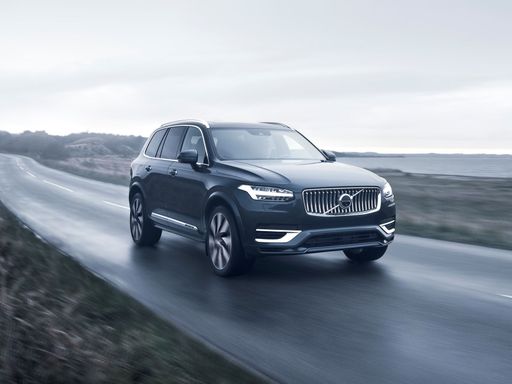
Volvo XC90
Nissan X-Trail
The Nissan X-Trail stands out with its spacious interior and practical design, making it an ideal choice for families and adventure enthusiasts alike. Its sleek exterior styling is complemented by modern technology features that enhance both driving pleasure and safety. This versatile SUV offers a comfortable ride, whether navigating city streets or exploring off-road paths, ensuring you travel in style and comfort.
details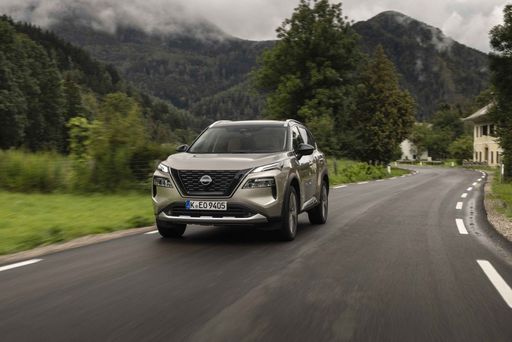 @ germany.nissannews.com
@ germany.nissannews.com
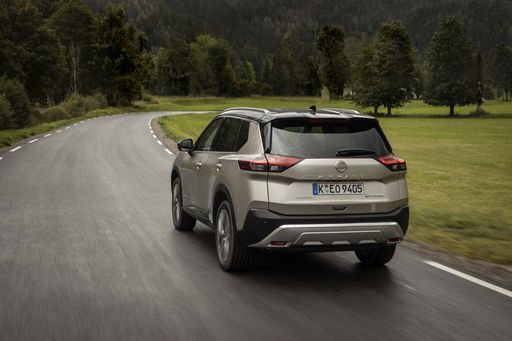 @ germany.nissannews.com
@ germany.nissannews.com
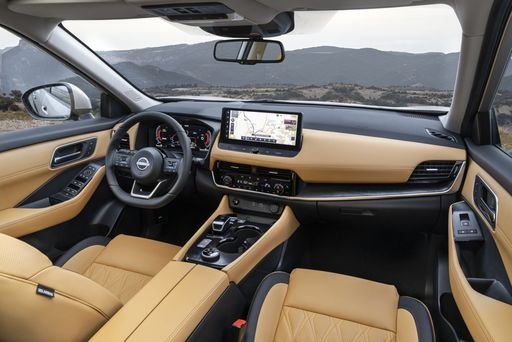 @ germany.nissannews.com
@ germany.nissannews.com
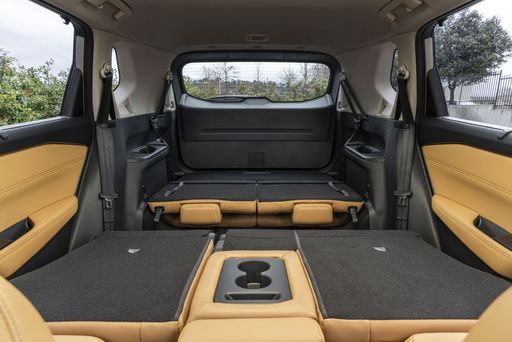 @ germany.nissannews.com
@ germany.nissannews.com
Volvo XC90
The Volvo XC90 stands out with its elegant Scandinavian design, seamlessly blending luxury with versatility. Inside, it offers a spacious and meticulously crafted interior, showcasing high-quality materials and advanced technology. The vehicle provides a comfortable and smooth driving experience, making it a popular choice for families and long journeys.
details @ media.volvocars.com
@ media.volvocars.com
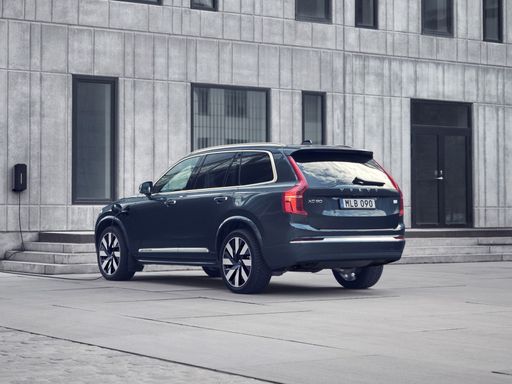 @ media.volvocars.com
@ media.volvocars.com
 @ media.volvocars.com
@ media.volvocars.com
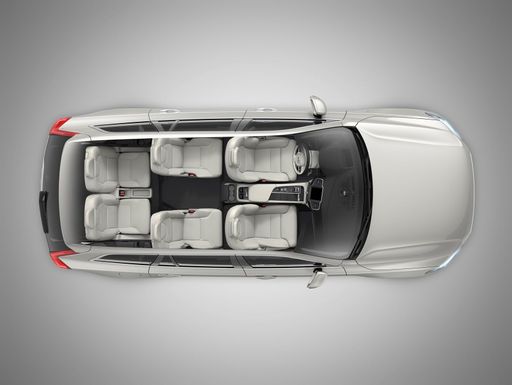 @ media.volvocars.com
@ media.volvocars.com
 @ media.volvocars.com
@ media.volvocars.com

|

|
|
|
|
Costs and Consumption |
|
|---|---|
|
Price
34000 - 50400 £
|
Price
69800 - 84600 £
|
|
Consumption L/100km
5.7 - 6.9 L
|
Consumption L/100km
3.5 - 8.5 L
|
|
Consumption kWh/100km
-
|
Consumption kWh/100km
-
|
|
Electric Range
-
|
Electric Range
71 km
|
|
Battery Capacity
-
|
Battery Capacity
14.70 kWh
|
|
co2
131 - 161 g/km
|
co2
79 - 191 g/km
|
|
Fuel tank capacity
55 L
|
Fuel tank capacity
71 L
|
Dimensions and Body |
|
|---|---|
|
Body Type
SUV
|
Body Type
SUV
|
|
Seats
5 - 7
|
Seats
7
|
|
Doors
5
|
Doors
5
|
|
Curb weight
1668 - 1961 kg
|
Curb weight
2080 - 2297 kg
|
|
Trunk capacity
177 - 585 L
|
Trunk capacity
262 - 302 L
|
|
Length
4680 mm
|
Length
4953 mm
|
|
Width
1840 mm
|
Width
1923 mm
|
|
Height
1720 mm
|
Height
1771 mm
|
|
Max trunk capacity
1396 - 1424 L
|
Max trunk capacity
1816 - 1856 L
|
|
Payload
432 - 574 kg
|
Payload
653 - 710 kg
|
Engine and Performance |
|
|---|---|
|
Engine Type
Petrol MHEV, Full Hybrid
|
Engine Type
Petrol MHEV, Plugin Hybrid
|
|
Transmission
Automatic
|
Transmission
Automatic
|
|
Transmission Detail
CVT, Reduction Gearbox
|
Transmission Detail
Automatic Gearbox
|
|
Drive Type
Front-Wheel Drive, All-Wheel Drive
|
Drive Type
All-Wheel Drive
|
|
Power HP
163 - 213 HP
|
Power HP
250 - 455 HP
|
|
Acceleration 0-100km/h
7 - 9.6 s
|
Acceleration 0-100km/h
5.4 - 7.7 s
|
|
Max Speed
170 - 200 km/h
|
Max Speed
180 km/h
|
|
Torque
300 - 525 Nm
|
Torque
360 - 709 Nm
|
|
Number of Cylinders
3
|
Number of Cylinders
4
|
|
Power kW
120 - 157 kW
|
Power kW
184 - 335 kW
|
|
Engine capacity
1497 cm3
|
Engine capacity
1969 cm3
|
General |
|
|---|---|
|
Model Year
2024
|
Model Year
2024 - 2025
|
|
CO2 Efficiency Class
F, D, E
|
CO2 Efficiency Class
G, B
|
|
Brand
Nissan
|
Brand
Volvo
|
Is the Nissan X-Trail offered with different drivetrains?
The Nissan X-Trail is offered with Front-Wheel Drive or All-Wheel Drive.
The prices and data displayed are estimates based on German list prices and may vary by country. This information is not legally binding.
